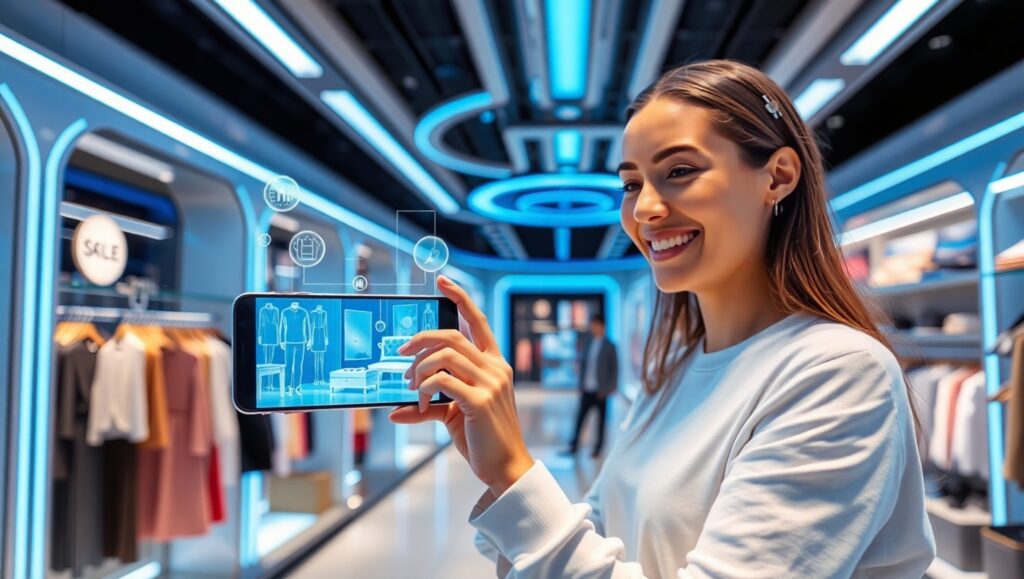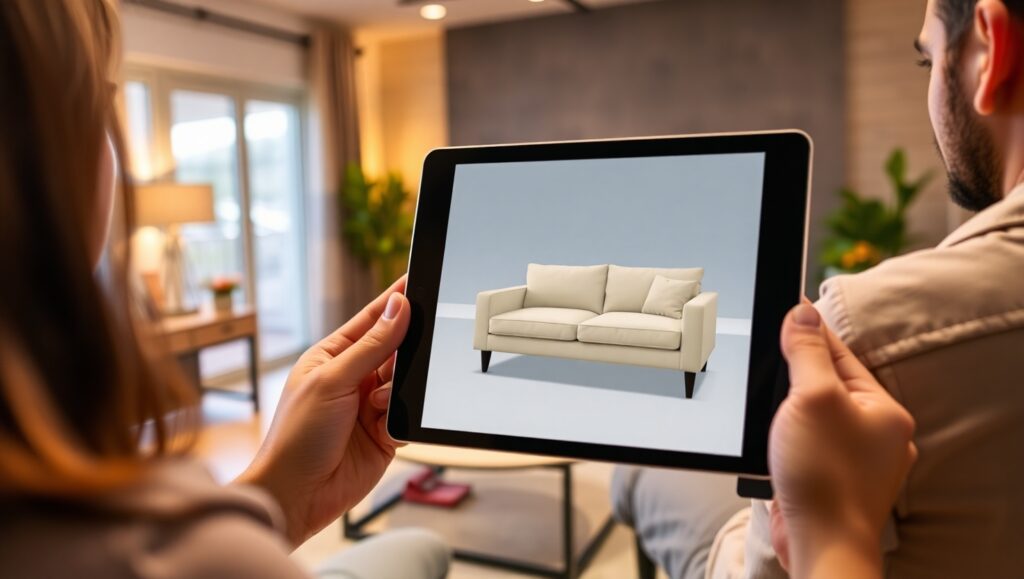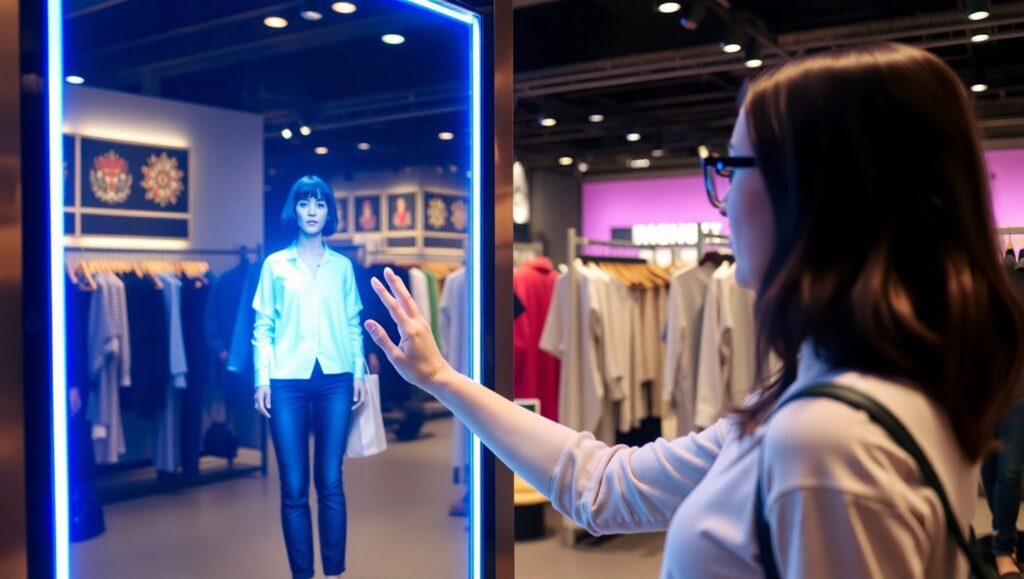Introduction
Imagine trying on clothes without stepping into a fitting room or visualizing how a piece of furniture fits in your home without leaving your couch. Augmented Reality (AR) is not just a futuristic buzzword; it’s changing the way we shop, creating immersive, convenient, and engaging retail experiences.
In this blog, we’ll dive into how AR is reshaping retail shopping, making it a game-changer for both businesses and consumers.
What is Augmented Reality in Retail?
AR blends the physical and digital worlds by overlaying virtual objects in the real environment through a smartphone, tablet, or AR glasses. It empowers customers to interact with products in ways that were once unimaginable.
How AR is Changing Retail Shopping
1. Virtual Try-Ons
One of the most revolutionary AR applications is virtual try-ons.

- Fashion and Beauty: Customers can try clothes, glasses, and makeup virtually. For example:
- Sephora’s Virtual Artist lets users test makeup shades in real-time.
- Zara’s AR app allows users to see models wearing the clothes in-store.
- Impact: Eliminates the need for physical trials, reduces returns, and increases purchase confidence.
2. AR-Powered Product Previews

AR helps customers visualize products in their intended spaces.
- Home Décor and Furniture: Apps like IKEA Place allow users to position virtual furniture in their living spaces.
- Impact: Customers can see how products fit and complement their homes, reducing buyer uncertainty.
3. Interactive In-Store Displays
AR enhances physical retail spaces by offering interactive displays.
- Example: AR-enabled mirrors in fitting rooms provide suggestions for matching accessories or alternative styles.
- Impact: Creates an engaging and personalized shopping experience.
4. Gamified Shopping Experiences
Retailers use AR to gamify shopping, making it fun and engaging.

- Example: Pokémon GO-inspired treasure hunts in malls encourage foot traffic.
- Impact: Boosts in-store engagement and creates memorable experiences.
5. Personalized Marketing
AR allows brands to offer personalized recommendations through interactive ads.
- Example: SnapChat’s AR filters showcase products in creative ways.
- Impact: Increases brand recall and engagement.
Benefits of AR in Retail
- Enhanced Customer Engagement: Interactive and immersive experiences keep customers interested.
- Reduced Returns: Customers make more informed decisions, reducing the rate of returns.
- Increased Sales: AR boosts buyer confidence, leading to higher conversion rates.
- Competitive Edge: Brands adopting AR are perceived as innovative and forward-thinking.
Challenges in AR Adoption
While AR offers immense potential, some challenges remain:
- Cost: Developing AR solutions can be expensive for small businesses.
- Technical Barriers: Not all consumers have access to AR-compatible devices.
- Learning Curve: Customers unfamiliar with AR might face initial hesitation.
Future of AR in Retail
As AR technology becomes more accessible, its adoption in retail is expected to grow exponentially. The integration of AR with AI, 5G, and wearable tech will further enhance its capabilities, making retail shopping even more personalized and intuitive.
Conclusion
Augmented Reality is no longer a futuristic concept; it’s a transformative force in retail. From virtual try-ons to gamified experiences, AR is bridging the gap between physical and online shopping, offering convenience and engagement like never before.
Whether you’re a consumer looking for smarter ways to shop or a retailer aiming to stay ahead, AR is the future you can’t ignore.
Stay tuned to TechGen Zone for more insights into how emerging technologies like AR are shaping the world of retail and beyond!

